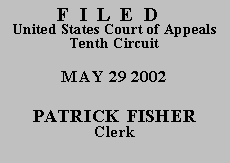 UNITED STATES COURT OF APPEALS
UNITED STATES COURT OF APPEALS
 UNITED STATES COURT OF APPEALS
UNITED STATES COURT OF APPEALS
TENTH CIRCUIT
| UNITED STATES OF AMERICA, | |
| Plaintiff - Appellee, | |
| v. | |
| JUAN CARLOS OVALLE, | |
| Defendant - Appellant. |
Mr. Ovalle appeals his conviction pursuant to 18 U.S.C. § 922(g)(1) for illegally possessing a firearm after having been previously convicted of a felony. After a jury trial, the district court sentenced Mr. Ovalle to eighty-four months of imprisonment to be followed by three years of supervised release. Mr. Ovalle timely appeals his conviction and sentence to this court.
The sufficiency of evidence to support a criminal conviction is a question of law that we review de novo. See United States v. Hanzlicek, 187 F.3d 1228, 1239 (10th Cir. 1999). We view the evidence in the light most favorable to the government and determine whether "any rational trier of fact could have found the essential elements of the crime beyond a reasonable doubt." Jackson v. Virginia, 443 U.S. 307, 319 (1979) (emphasis in original); Hanzlicek, 187 F.3d at 1239.
A conviction pursuant to 18 U.S.C. § 922(g)(1) requires the government to prove three elements: 1) that the defendant was a previously convicted felon; 2) that the defendant knowingly possessed a firearm; and 3) that the possession was in or affecting interstate commerce. See United States v. Hishaw, 235 F.3d 565, 571 (10th Cir. 2000). Defendant contests only the second element that he knowingly possessed a firearm.
At trial, two police officers testified that Mr. Ovalle was riding in the front passenger seat of a car that held three other men. The car windows were not tinted. The two police officers followed the car after seeing it make an illegal turn. There was testimony that the officers activated their lights to pull the car over, but the driver of the pursued car accelerated. The officers observed the front seat passenger toss a black handgun and magazine out of the front window before the driver finally pulled over. Based on this evidence, the jury found that Mr. Ovalle possessed the firearm in question. Mr. Ovalle claims that no reasonable jury could have found that he possessed the firearm because it was nighttime, the police officers had an obstructed view of the car, the front window was broken, and no physical evidence linked Appellant to the gun or magazine.
Defendant's arguments call into question the police officers' credibility. This court may "not use this evaluation as a chance to second-guess the jury's credibility determinations[] nor . . . reassess the jury's conclusions about the weight of the evidence presented." United States v. Beers, 189 F.3d 1297, 1301 (10th Cir. 1999) (quotation omitted). We have carefully reviewed the briefs, the district court's disposition, and the record on appeal. The record contains specific evidence supporting the jury's conclusion that Mr. Ovalle possessed the firearm in question. Viewing the evidence in the light most favorable to the government, we hold that a "rational trier of fact could have found the essential elements of the crime beyond a reasonable doubt." Jackson, 443 U.S. at 319.
The conviction and sentence are AFFIRMED.
Entered for the Court
Monroe G. McKay
Circuit Judge
*. This order and judgment is not binding precedent, except under the doctrines of law of the case, res judicata, and collateral estoppel. The court generally disfavors the citation of orders and judgments; nevertheless, an order and judgment may be cited under the terms and conditions of 10th Cir. R. 36.3.